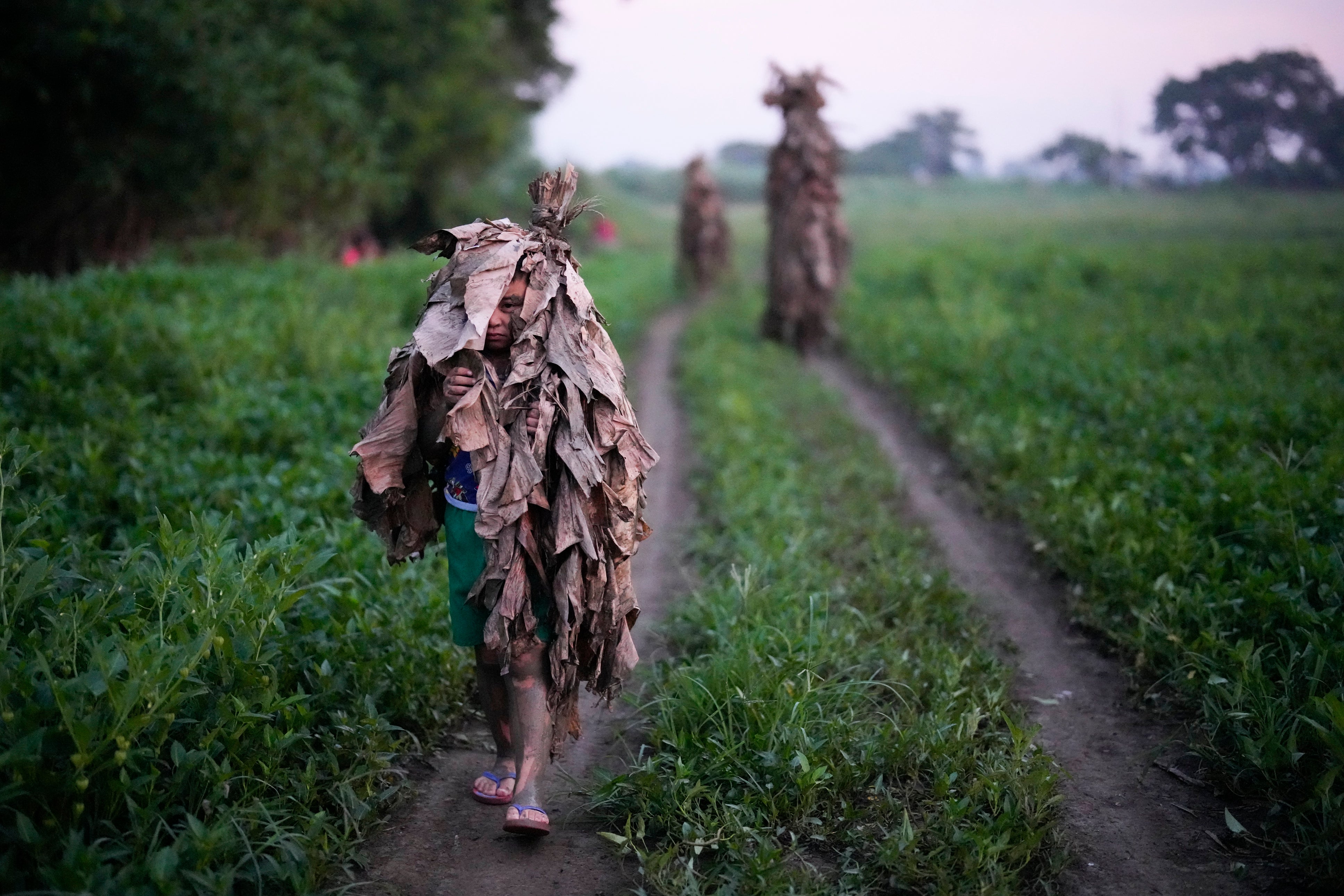An AP Photographer picked his own path when trying to make the perfect Mud People Festival photo
Aaron Favila has been working for The Associated Press in the Philippines for 26 years, covering everything from politics to crime to sports to disasters to everyday people

Your support helps us to tell the story
From reproductive rights to climate change to Big Tech, The Independent is on the ground when the story is developing. Whether it's investigating the financials of Elon Musk's pro-Trump PAC or producing our latest documentary, 'The A Word', which shines a light on the American women fighting for reproductive rights, we know how important it is to parse out the facts from the messaging.
At such a critical moment in US history, we need reporters on the ground. Your donation allows us to keep sending journalists to speak to both sides of the story.
The Independent is trusted by Americans across the entire political spectrum. And unlike many other quality news outlets, we choose not to lock Americans out of our reporting and analysis with paywalls. We believe quality journalism should be available to everyone, paid for by those who can afford it.
Your support makes all the difference.Aaron Favila has been working for The Associated Press in the Philippines for 26 years, covering everything from politics to crime to sports to disasters to everyday people. He was at the Mud People Festival in Bibiclat in the northern Philippines for the first time since 2016 when he made this extraordinary photo. Here’s what he had to say about the shot.
Why this photo?
There are many religious festivals in predominantly Roman Catholic Philippines and each has a unique flavor to it. The Mud People Festival, or “Taong Putik,” is very unique and was worth a revisit because the last time we covered this was in 2016. We planned logistics and looked at past photos to get a better idea of how the annual event works.
I was looking for an interesting subject and this boy caught my attention because not many young people join the event. The practice has been going on for generations, and villagers told me most of them started attending when their parents would bring them. It was both a religious and nostalgic experience for most of them. Devotees participate to pray for a favor or to say thanks.
I saw the father of the boy putting mud on his child's face and then placing the banana leaves over his body. The boy walked in front of the father. I ran and followed them thinking this would make a great representation of the story — it shows the rural setting, the mud, the face of the boy (probably still half awake) and the banana leaves. All of these elements contributed to making a good storytelling photo of the Mud People Festival.
How I made this photo
We left our hotel around 3 a.m. We met with photographer friends who knew the area much better than I did. We were led by a local student photographer to a field where water buffalo bathe underneath trees. Several photographers and vloggers also arrived at the area with LED and flashlights. That killed the natural ambiance, and I knew I had to break free from that group. I placed a fixed lens, F1.2, on my camera because I knew light would be difficult.
This image was shot shortly after 5 a.m., and the sun was just about to rise. I waited for the subjects to walk away from the muddy spot to get a cleaner image. I walked in front of the boy for several meters (yards) and chose an image that showed the feet clearly and his face partly hidden in banana leaves. When I looked at the viewfinder and framed the photo. I just knew this was it. My heart pounded and sweat began trickling down my face — that’s my barometer when I see a great image. I locked onto the subject until I framed it right.
Why this photo works
The scene looked like a set from a movie. It felt surreal with the lighting as well. This was shot almost full frame on the 50 mm fixed lens. I am thankful for the autofocus on the Sony A1 as it tracked the subject sharply and gave me the ability to frame off-center following the rule of thirds. The shallow depth of field on the F1.2 also worked to isolate the subject from the other participants and background, so viewers can focus on the muddied boy and the banana leaves. The lines made by the pathways would lead the viewers' eyes to the other participants and ambiance.
On the ground, I always strive to be different from the pack — to capture a unique moment that tells the story. I knew this day would be difficult because I expected to make a lot of images, but this one stood out. A good photo should be easy to digest but still leave the viewer with questions. Emotions play a big part in pictures. The eyes help in telling how your subject felt at that moment. In this picture, the boy seems to be lost and wondering what he is doing — or he is just walking half awake. The blue flipflops and shirt add a good contrast.
The light, subject, eyes, color and ambiance all play important roles in making a good storytelling photo. With a bit of luck, it will all frame together in one aesthetically pleasing frozen reality. An image that makes you stop and think about, and appreciate, life.
___
For more extraordinary AP photography, click here.